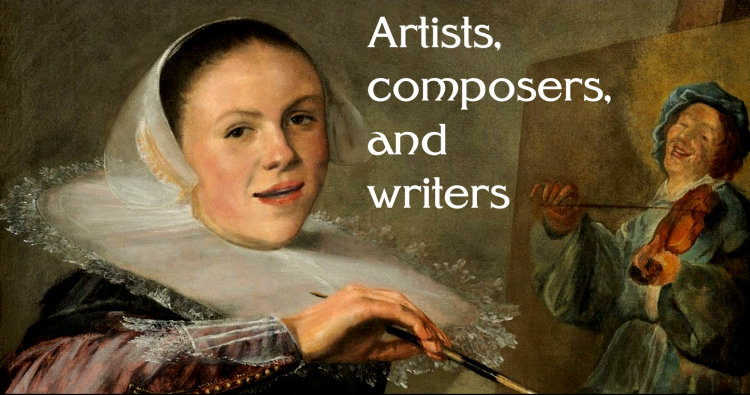5. Portraits of Many Kinds.
Painting in 17th-century Holland is distinctly different from that even of its neighbor, Flanders. The largely Protestant
nation developed an art that was bourgeois, secular, and concerned with civic values rather than those of court or church.
You could argue that the dominant genre was the portrait, both of individuals and group portraits of the officers
of some institution, such as you see in Rembrandt's Night Watch or Syndics (above). And extending the term to
include any realistic depiction of the contemporary world, we get "portraits" of cities, the buildings in them, and the
objects they contain. We get scenes from everyday life, often conceived as domestic moralities. And we get the portrait of
Holland itself, its vast skies, and the spreading landscape of its land and water.
In addition to a wide range of examples as indicated above, the class will be anchored by the work of two geniuses who, though
still a product of their place and time, stand nonetheless apart from it. In the first hour, we look at Rembrandt, more
Protean than any of his contemporaries, more baroque in manner, and painting in a style more recognizable as his
rather than that of his nation. The presiding genius of the second hour will be the meticulous Vermeer, producing very few
paintings, yet in each one refusing to be tied to the expectations for the genre in lesser hands.
The video examples will be rather more of a mixed bag. For whatever reason, it is hard to find Dutch music of the period
that matches the magnificent invention found in the visual arts. So I am having to rely a good deal on music composed or
arranged in later periods, plus a couple of documentaries, a clip from a movie, and even a folk song accompanied on the
accordion!
The best book by far on the subject is Seymour Slive's Dutch Painting 16001800. Even his introduction is helpful;
I attach a PDF of it with the most relevant passages highlighted. rb.
The script, videos, and images will be posted immediately after class.
Here are brief bios of the artists and poets considered in the class, listed in chronological order of birth.
You can access all biographies via the BIOS link on the syllabus page.
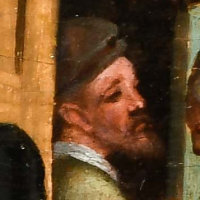 |
Aert Pietersz, 15501612. Dutch painter.
Little is known about this painter of the earlier Golden Age, other than some portraits and allegories. [This detail from one of Pieterz's paintings is only a possible self-portrait.]
|
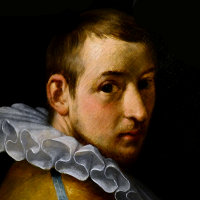 |
Cornelis van Haarlem, 15621638. Dutch painter.
Cornelis was known for his Italianate biblical and mythological paintings featuring nude figures in energetic and often contorted poses. He was also a portraitist.
|
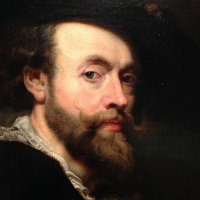 |
Peter Paul Rubens, 15771640. Flemish painter and diplomat.
One of the giants of baroque art, Rubens developed the style of Titian into a powerful rhetoric applied equally to sacred and profane subjects, and exerted enormous influence in Spain, England, and France as well as in his native Flanders, continued in the work of his many pupils. His position at so many courts also made him invaluable as a diplomat.
|
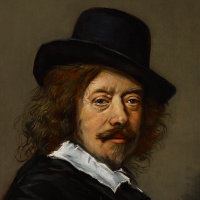 |
Frans Hals, 15821666. Dutch painter.
Though born in Antwerp, he moved to Harlem with his parents and spent the rest of his life there. 24 years older than Rembrandt, he was the first great master of the Dutch Golden Age and its leading portraitist. His style is remarkable for the effects he could achieve from a few swift touches of paint.
|
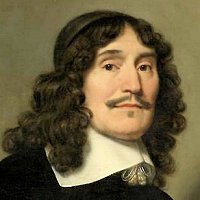 |
Gerrit van Honthorst, 15921656. Dutch painter.
He was a leading member (with Terbrugghen and Baburen) of the Utrecht School of painters in early 17th-century Holland, following in the style of Caravaggio. His earlier works are noted for his use of a candle (often semi-concealed) to provide the ostensible light for his pictures. He later achieved success as a court portraitist.
|
 |
Dirck van Baburen, 15951624. Dutch painter.
He was a leading member (with Honthorst and Terbrugghen) of the Utrecht School of painters in early 17th-century Holland, following in the style of Caravaggio. Although he died young, he had already made a mark with the vigor of his genre scenes such as The Procuress (1622), which would influence a lot of subsequent Dutch painting.
|
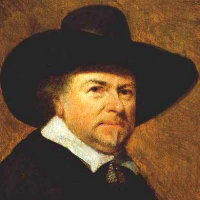 |
Jan van Goyen, 15961656. Dutch painter.
The outstanding artist in the earlier, tonal stage of Dutch landscape painting, he produced several thousand views of all aspects of the countryside, noted for their atmosphere and sensitive use of a restricted palette. He was widely influential.
|
 |
Thomas de Keijzer, 15961667. Dutch painter.
Coming from a family of artists, Keijzer (also spelled Keyser) was the leading portraitist in Amsterdam before being eclipsed by Rembrandt in the 1630s. He is known especially for his group portraits. [The portrait here may be by him, but is probably not of him.]
|
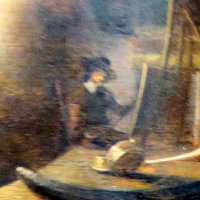 |
Pieter Claesz, 15971660. Dutch painter.
Though born near Antwerp, he moved to Haarlem in is early twenties, and there became a leading painter of Still Lifes, using subtle modulation of a limited palette, and often with some allegorical or moral overtone. He was also a musician. [The illustration is a distant reflection of the painter in one of his works.]
|
 |
Rembrandt Harmenzoon van Rijn, 160669. Dutch painter and printmaker.
The greatest artist of the Dutch Golden Age, he nonetheless retained his own style which set him apart from his contemporaries. There is a strong baroque influence earlier in his career, but his later work developed a quality of deep introspection in which the subject seems to glow within rich layers of paint.
|
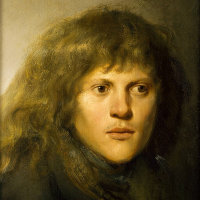 |
Jan Lievens, 160774. Dutch painter.
When both were young, he was often compared to Rembrandt in terms of promise, and indeed the two were friends and occasionally collaborated. But he did not show the same sustained development as his more famous colleague.
|
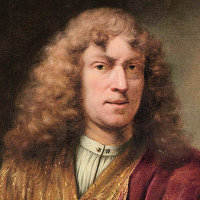 |
Ferdinand Bol, 161680. Dutch painter.
Much of his surviving work has been wrongly attributed to his master, Rembrandt, but in fact Bol rose to become the most successful Amsterdam painter in the mid-17th century.
|
 |
Gerard Terborch, 161781. Dutch painter.
Gerard Terborch (also spelled ter Borch) received his training from his artist father. He developed a specialty of intimate genre scenes, often showing women in their homes, and establishing many of the themes (such as the writing or receipt of a letter) later developed by Vermeer.
|
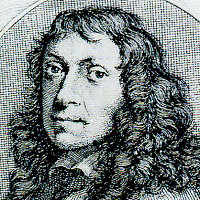 |
Willem Kalf, 161993. Dutch painter.
Kalf was born in Rotterdam, then spent five years in Paris, then returned to Holland, eventually settling in Amsterdam. In the second half of the century, he became the leading painter of pronkstilleven (ostentatious Still Lifes) containg exotic and expensive objects beautifully rendered in glowing color.
|
 |
Jan Steen, 162579. Dutch painter.
Although he also painted portraits and historical or religious works, he is best known for his genre subjects, typically a merry but disorderly household scene illustrating the consequences of ignoring some moral precept.
|
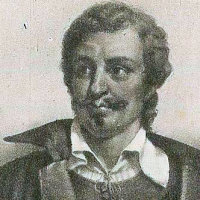 |
Jacob van Ruisdael, 162892. Dutch landscape painter.
The son of a painter, he became the leading landscapist of his age, famous for the underlying drama of his apparently naturalistic paintings and the brilliant handling of his skies. [No contemporary portraits of Ruisdael exist; the illustration here is a 19th-century fantasy.]
|
 |
Pieter de Hooch, 162984. Dutch painter.
His best paintings date from his years in Delft (165561), and show scenes of urban life in the sunlit rooms and inner courtyards of Dutch houses, in a manner not too dissimilar from Vermeer. Later in Amsterdam, his quality took second place to quantity. He died in a madhouse.
|
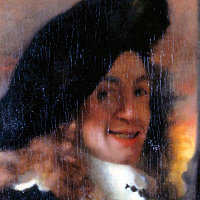 |
Johannes Vermeer, 163275. Dutch painter.
Now considered second only to Rembrandt among the geniuses of the Golden Age, Vermeer did not have much success in his lifetime. Although most of his relatively small body of work could be described as genre subjects (for example, women engaged in household tasks), their sense of greater significancea simple act suspended in eternityis not easily explained, though much has to do with the solidity of his forms, his sense of light, and a paint surface that one contemporary described as "crushed pearls melted together."
|
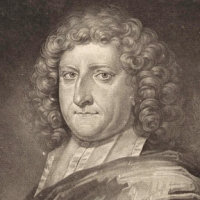 |
Sybrand Van Noordt, 16591705. Dutch composer.
[I can find out next to nothing about his career.]
|
 |
Johann Christian Schickhardt, 16821762. German composer and instrumentalist.
Though born and working mainly in Germany, Shickhardt studied at the University of Leiden and, at one time or another, worked for the Prince of Orange. He is known for his many sonatoas for woodwind instruments, which he himself played professionally.
|
 |
Cornelis Dopper, 18701939. Dutch composer and conductor.
Dopper trained in Germany, but returned to Holland where he devoted himself to creating a recognizably Dutch form of music. Despite this, his reputation suffered from accusations of being too Germanic in his sympathies.
|
 |
Hans Kindler, 18921949. Dutch-American cellist and composer.
Marooned in the United States by the outbreak of WW1, Kindler decided to stay here, and was appointed first cellist of the Philadelphia Orchestra under Stokowski. Later, he gave up the cello for conducting, and in that capacity founded the National Symphony Orchestra in 1931.
|
















































